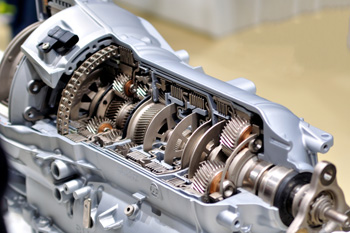 Are you noticing that your car jerks when accelerating? You probably wonder what is causing it. Your first guess is probably a transmission problem. Not necessarily. There are a lot of reasons why you might have this issue.
Are you noticing that your car jerks when accelerating? You probably wonder what is causing it. Your first guess is probably a transmission problem. Not necessarily. There are a lot of reasons why you might have this issue.
Dirty Fuel Injectors
When fuel courses through the lines, it can leave the injectors dirty. This can begin to compromise how the injector functions, which has a noteworthy impact on acceleration. It can start to reduce the flow of the fuel, which leads to the jerking experience.
Dirty Air Filters
Air filters can become clogged and/or dirty after constant use. This is when the car begins to stutter and doesn’t function the way it is supposed to.
The best course of action in a situation like this is to replace the air filters.
Blocked Catalytic Converters
Catalytic converters can begin to break down through regular use. This includes blockages that have to be corrected by a qualified auto repair technician.
It’s possible to repair the catalytic converter and/or replace it depending on the situation. Once it is unclogged, the acceleration will become smoother.
Worn Out Spark Plugs
Spark plugs can start to wear down and these will have to be replaced to ensure there are no shortages in power throughout the vehicle. This can lead to the jerking experience when accelerating.
Damaged Gas Lines
In some cases, gas lines can become damaged. This impedes the fuel’s flow through the vehicle, which compromises how the vehicle functions.
These gas lines have to be fully repaired for them to work as intended.
Defective Carburetors
Carburetors are responsible for supplying air and fuel to the engine. If this tends to stop working, the engine won’t function as intended and that reduces acceleration.
This will have to be opened and repaired or in some cases replaced.
Damaged Cylinders
The last reason can be the cylinders becoming damaged.
When they are damaged, the cylinders stop functioning as intended and that causes the car to jerk. The best option is to repair the cylinders or repair them.
If you have this issue, don’t wait around. Bring you car into Lim’s Auto Body and let us take a look.
Lim’s Auto Body is a full service auto body and mechanical repair shop locally owned and operated in Largo, Florida. For more information, go to our web site www.limsautobody.com or call (727) 422-3232.

 Changing your transmission fluid is not something the average person thinks about on a regular basis. Do you remember ever changing your transmission fluid? Perhaps you should check it out.
Changing your transmission fluid is not something the average person thinks about on a regular basis. Do you remember ever changing your transmission fluid? Perhaps you should check it out.